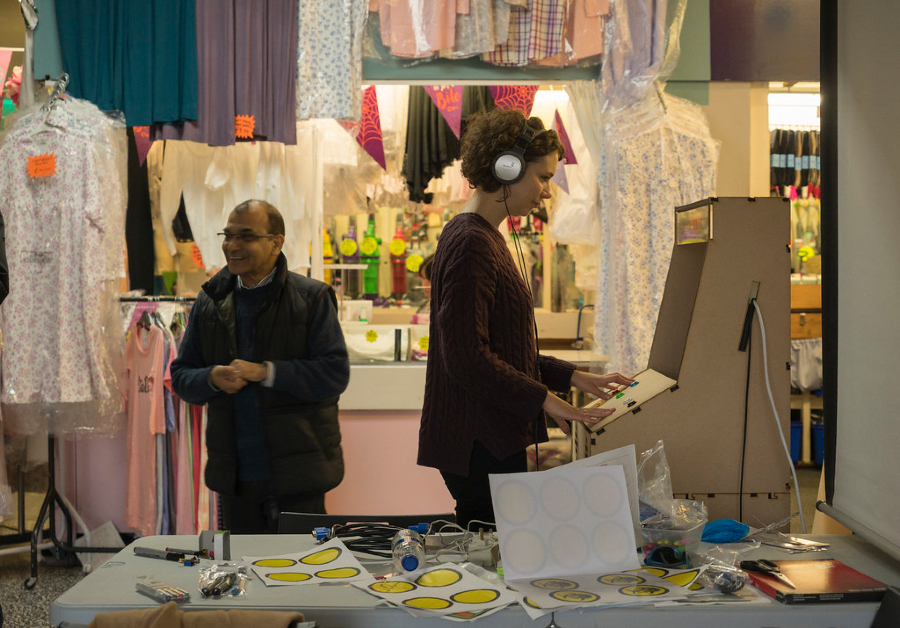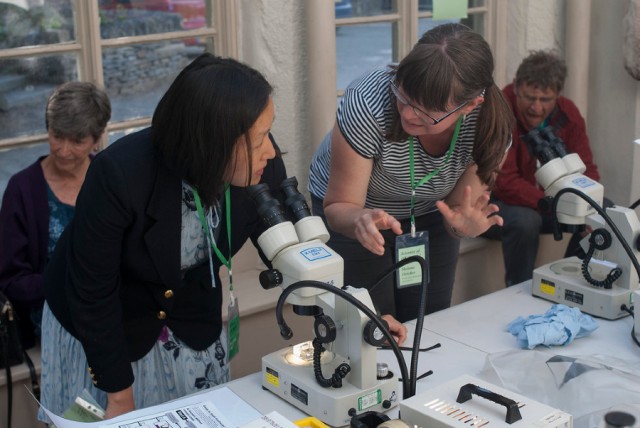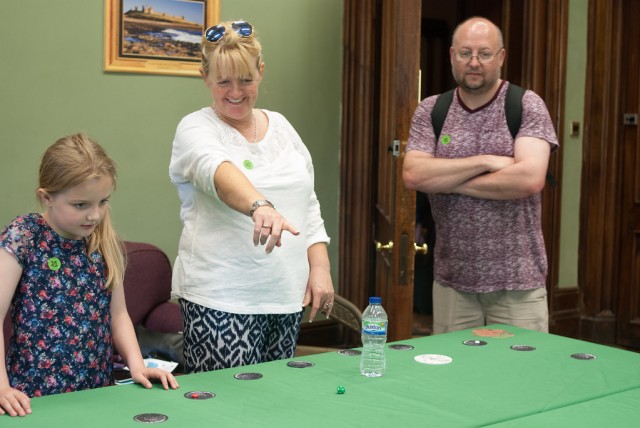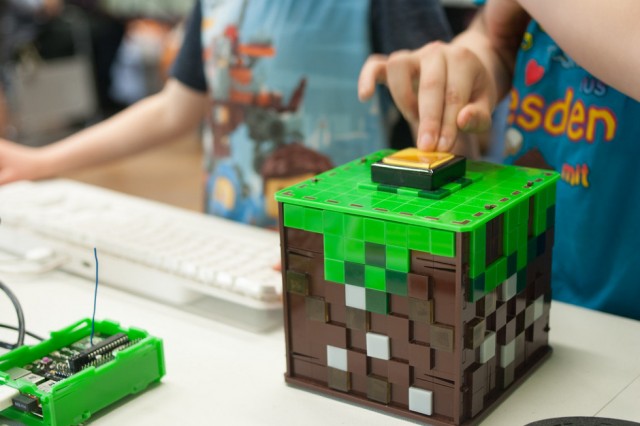Research In The Wild: “An ever-changing map of connected relationships”

What issues effecting the arts are to the fore in Lancashire and Cumbria right now? In the first of a new series commissioned by Contemporary Visual Arts Network North-by-NorthWest (CVAN NbyNW), Ross Dalziel highlights those embracing an ‘artistic-research-in-the-wild’ approach…
People make unique relationships with everyday things. Computers, supermarkets, van hire companies, office spaces, insurance, eBay, friends, charity shops, pubs, paintbrushes, lovers, cross-head screwdrivers. Some are more important than others, with humans or non-humans, living things or objects or systems. Some relationships are more meaningful than others, more joyful, unequal, exploitative, dangerous or important. This is obvious and necessarily ignored as we get on with the day-to-day, but some specialists, like social scientists, artists or writers, are particularly sensitive to these relations. Such social relations are just as important as the things themselves. From this perspective, objects are inseperable from these relationships.
Michel Callon wrote an influential essay called Acting in an Uncertain World (Callon, 2009) which maps the complex relationships of science and society in a seemingly democratic post-modernity, where facts are contested in all kinds of ways. He describes how science necessarily takes place in research laboratories. He calls this “secluded research”. He also talks about a less well-known tradition of “hybrid forums” where “laypersons” and “specialists” co-operate around problems, like under-represented disability or the storage of nuclear waste. This is where the secluded research of science meets the messy social world of the non-specialist public. He calls this kind of work “research in the wild”. I think these could be useful ideas when thinking about doing research and practice in art in an always uncertain world.
Recently, we’ve all seen ordinarily ignored patterns become highly visible, as a pandemic makes tiny interactions – even with a door handle – a matter of life or death. Delicately balanced ‘just-in-time’ supply relations disrupt into empty supermarket shelves, historical shifts of private and public finance relations leaving health services overwhelmed. It’s hard to write about art now. Most of this was written well before the current COVID-19 crisis when business was ‘as usual’. I’m not going to follow with a “we need art more than ever” argument, because as convincing to some as that may be, I think that it is always difficult and troubling to do art or any kind of highly specialist or resource hungry activity in a world where all kinds of urgent crises are already under way; it’s worthwhile acknowledging this difficulty. Thinking of art as a form of “research in the wild”, a way of knowing the world, might help us to consider how art practices are developed and supported in times of crisis when other things, other relationships, become much more important.
Domestic Science
I’m part of the artist collective Domestic Science. We specialise in a kind of interdisciplinary art-science – a lesser known but established artistic genre where artists and scientists work together as equal collaborators. Our approach is to try and pick up on some of the things they do, like how to measure water pollution, as if it was a craft to learn. We don’t make art with science as a subject or as a service to explain it, but to get close to scientists to do art alongside them. We might use tidal data as the basis of a sewing workshop for people to talk about the coastline, for example. Scientists may look like guardians of immutable facts far away from art, but they are really always crafting and testing relationships to get the data they need. Susan Leigh Star writes eloquently about this. She could just as easily be writing about art:

“Scientific writing often encodes powerful emotive narratives. Enshrouded, archived, hidden away in government white papers and documents, read and unread, lives every passion and drama common to all human activity. However, what scientists do […] is fundamentally inaccessible to most of the world. People may see a map of a genome or a syringe full of experimental medication. These are just the end products, however, of a web of relationships […] Relations between people, between different perceptions of objects, between nature and politics, between laboratories and administrations, to name but a few, are part of the relational world.” (Star in Bryant and Charmaz 2011)
For many years, Domestic Science has worked with the art organisation Full Of Noises in Barrow-in-Furness, who fully embrace an artistic-research-in-the-wild approach. Many of their events are like ‘hybrid forums’, supporting artists who work with sound, performance, sculpture and music, alongside diverse groups of people, on golf putting greens and bandstands, in care homes, or accessible talks from scientists from a local wildlife reserve in an indoor market.
The View from Nowhere
It might be problematic to say that working somewhere is ‘wild’. It suggests people not into art or not in big cities are ‘wild’ and intrinsically interesting. Anthropology, and so social science, has had similar problems in its colonial past. A danger here is that it might imply some kind of artist exceptionalism, perhaps a relic from the enlightenment invention of perspective, a view from nowhere, where artists are in some ‘non-wild’ position transcending history or money.
The COVID-19 crisis has shown how artists can be as vulnerable to disaster capitalism as any gig economy worker, that despite a privileged percentile of art stars, most of us scramble for commissions or paid workshops and often work for nothing, subsidising research and practice by any means necessary. Nevertheless, there’s always a partly concealed investment, in finding time and space to develop creative work, what theorist Pierre Bourdieu would call social capital. This, like anything, is vulnerable to historical inequality. Social, gender, economic and class difference makes a political shape to who gets to do artistic work.

Done sensitively, research in the wild might remain useful if it brings these questions to the surface; what does research mean, where does it happen and who gets to do it? Rather than consider an ‘audience’ you engage with after the fact, it makes where and how you do things, and who you do them with, matter.
Trestle Tables
As artists with no particular medium, at Domestic Science we sometimes joke that what we do use all the time, is the humble trestle table. We don’t make art objects or spectacles in our practice so much as spaces for social activity to take place, with materials to support them. They vary from computer and board games, electronic music or DIY water sensors. Usually, we put them in non-art spaces on trestle tables. They are like the ‘by-products’ of the social interactions which are really the artworks. This is also part of another tradition, of participatory or socially engaged art, or the embedded art practices writer Marisa Jahn (Jahn 2010) surveys.
A practice like this, not exhibiting anything but focusing on social activity, on a table in a public park or on the side of a canal, feels like an attempt at research in the wild. You don’t have everything at your disposal, and you need support, like a table to work on and someone to help you carry it. Recall the art organisations you know and how much they do with any table they can scrounge to help people do things with artists. Notice the importance of everyday relationships, even with a table and who gets it for you, and you see things differently. Reality is not so much objects and people moving in space but an ever-changing map of connected relationships and practices. Art objects start to look like weird maps between the artist and paper, maker and object, or a big list of stuff. Artists from this perspective are not innovative units of artistic vision, rather they are super sensitive inventories of relationships.
Full Of Noises are an art organisation based far away from conventional art gallery settings, in an old park keeper’s lodge in Barrow Park. They are especially diligent about the things artists need to support these inventories. Tables, food, somewhere to sleep, charity shops, people to help, churches and bandstands to perform in, or schools on an island to work with. As curators and facilitators, Full Of Noises also seem aware that art is often in a kind of code that can alienate many people – they use the public spaces of Barrow-in-Furness and friendliness to try to counter that. Philosopher Bruno Latour thought this about scientists and again it seems true of artists: “Most scientists write in a kind of encrypted voice, a language that relies on […] invisible work, and its extremes of isolation and specialization” (Latour, 1987).

Poet, artist and scholar Nathan Jones observed much of this work is not necessarily dependent on artists innovating in public, but on the generosity of the public letting artists do stuff with them, without knowing all the invisible work behind it. The lack of art infrastructure or big audiences locally means Full Of Noises, in the ‘wild’ of the Walney estuary, know the importance of this. We’re lucky to have had access to that generosity and the networks, social capital and privilege to develop research like this. This is not our own merit but down to a community of small organisations like Full Of Noises who support work and foster public generosity. Many organisations are responding to the current uncertainty already, to continue to support their artists and audiences but doing things differently, Glenn Boulter, from FON described this recently:
“We are looking at approaches to work that might be adaptable to the unique situation we all find ourselves in. Some of this may focus on our ongoing FoN Air project, inviting artists to produce works for audio streaming, or in Barrow Park, an audio trail for once-a-day exercisers. Our Acoustic Commons project focuses on streaming environmental sounds from remote microphones sited in London, Japan, Greece, Slovenia and France for International Dawn Chorus Day. One of our concerns is that the public (and artists) will potentially be emerging from months of restrictions to a barrage of rescheduled events and related marketing campaigns, leading us to think that small scale, low-key events in the park may be the way forward.”
We may not need art, music or other specialisms in the same way in an uncertain world but we will need supporting, generous networks of people with tables to sit around, to craft and maintain new relationships, data and objects and care for those we already have in the wilds to come.
Ross Dalziel
This article is part of a new series, ‘New Critical Writing North West: Voices on Lancashire & Cumbria’: six new pieces of critical writing which will review and examine issues effecting the contemporary visual arts in Lancashire and Cumbria. The series has been commissioned by Contemporary Visual Arts Network North-by-NorthWest (CVAN NbyNW), and a new short feature will be profiled on The Double Negative every month until October 2020





